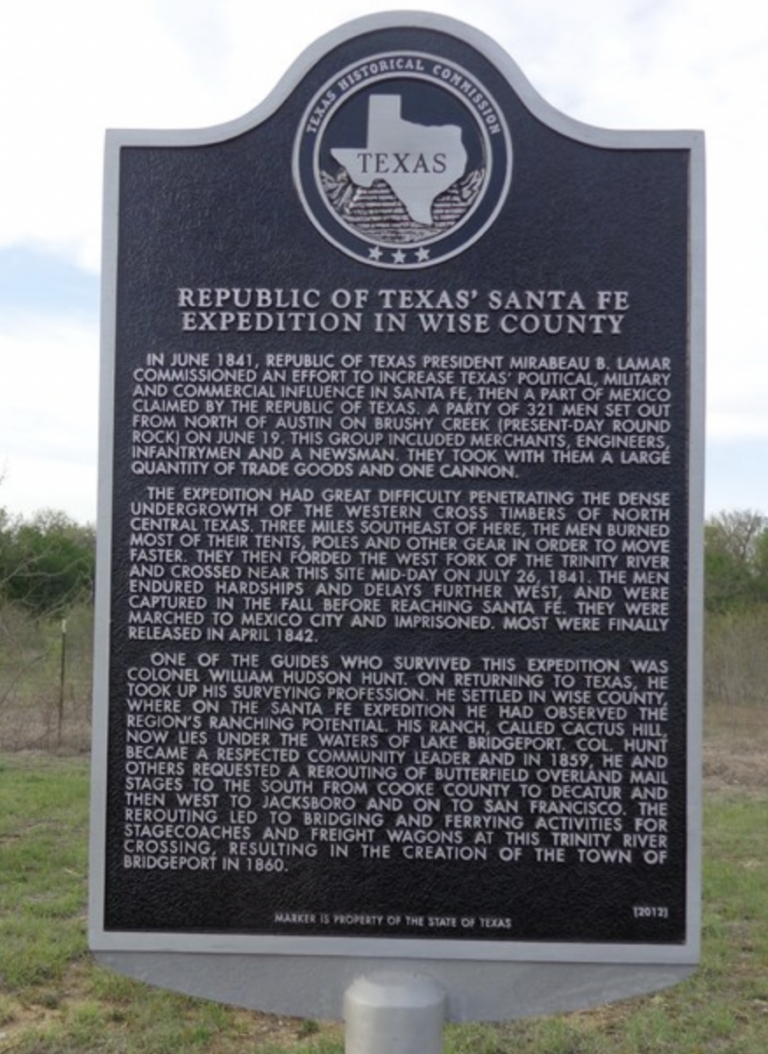Republic of Texas’ Santa Fe Expedition in Wise County
US 380, 0.1 mile east of 16th St (SH373) Bridgeport, Texas 76426

In June 1841, Republic of Texas President Mirabeau B. Lamar commissioned an effort to increase Texas’ political, military and commercial influence in Santa Fe, then a part of Mexico claimed by the Republic of Texas. A party of 321 men set out from north of Austin on Brushy Creek (present-day Round Rock) on June 19. This group included merchants, engineers, infantrymen and a newsman. They took with them a large quantity of trade goods and one cannon. The expedition had great difficulty penetrating the dense undergrowth of the western Cross Timbers of North Central Texas. Three miles southeast of here, the men burned most of their tents, poles and other gear in order to move faster. They then forded the West Fork of the Trinity River and crossed near this site mid-day on July 26, 1841. The men endured hardships and delays further west, and were captured in the fall before reaching Santa Fe. They were marched to Mexico City and imprisoned. Most were finally released in April 1842. One of the guides who survived this expedition was Colonel William Hudson Hunt. On returning to Texas, he took up his surveying profession. He settled in Wise County, where on the Santa Fe expedition he had observed the region’s ranching potential. His ranch, called Cactus Hill, now lies under the waters of Lake Bridgeport. Col. Hunt became a respected community leader and in 1859, he and others requested a rerouting of Butterfield Overland mail stages to the south from Cooke County to Decatur and then west to Jacksboro and on to San Francisco. The rerouting led to bridging and ferrying activities for stagecoaches and freight wagons at this Trinity River crossing, resulting in the creation of the town of Bridgeport in 1860.
